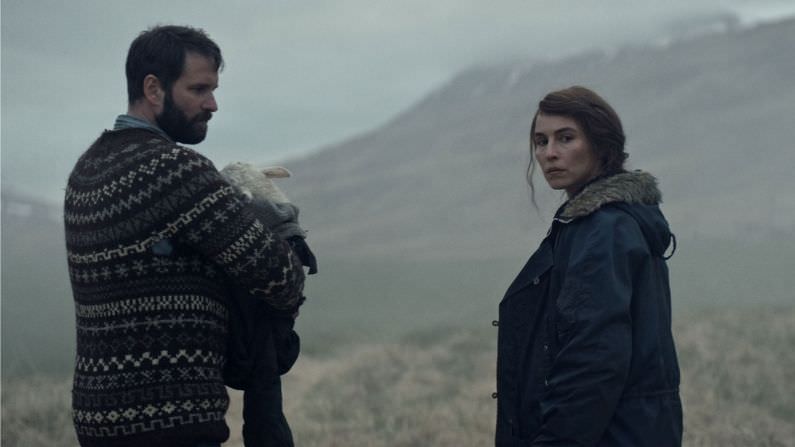Horror is not a film genre I’m particularly drawn to. I am a movie critic, though, so I’ve seen quite a lot of it anyhow. Though I do my best to remain objective as a reviewer, I must admit the slasher end of the horror spectrum is hard for me to relate to. I struggle to find anything positive (let alone constructive) to say about those titles. The good news for me and those like me is that the horror form has consistently nurtured the other, more nuanced, side of the spectrum over the years too. Recent projects like “Midsommer,” “The Lighthouse” and “Get Out” stretch and bend the tropes beyond recognition in their pursuit of new and interesting psychological angles. Blood and jump scares aren’t always necessary, these daring films propose, because the range of what contemporary audiences will find frightening is as broad and unpredictable as the human imagination itself.
“Lamb”, a new movie from Icelandic director Valdimar Jóhansson, is one of the creepiest screen experiences I had in some time. Filmed in the gorgeous rural expanse of his home country, Jóhansson’s story centers on a remote farm and the taciturn couple who raise sheep there. Portrayed wonderfully by Noomi Rapace and Hilmir Snær Gudnason, Maria and Ingvar live out the rhythms of their simple existence without much fuss, or much comment. In fact, as a viewer, one of the first things you suspect with “Lamb” is that there probably isn’t going to be a lot of talking. Or action. Or easily discernable plot. And it doesn’t take very long for those three suspicions to be confirmed. But the realizations come with the bonus epiphany that none of it is needed. As a study in uncanny, wordless storytelling, “Lamb” is a marvel. And things do pick up, eventually. It isn’t spoiling anything (the trailer does this on its own) to say that Maria and Ingvar make a discovery during the sheep birthing season that changes everything in their isolated world of two. It is exactly this strange moment in “Lamb” where the slowly building dread set up by the film’s opening sequence finally finds its footing.
It is true that the tone set by the scenery and the muted acting is initially pretty soporific, even though the sun never sets in this faraway place. But the two leads approach each new element in their lives of seasonal daylight with a quiet equanimity that counterintuitively enriches their isolation. You don’t need to see them deal with a blown-down fence or a broken leg to know that, in either case, they would just set down their coffee mugs and get on with things. The miracle in the barn is handled with the same measured calm. Their reaction is so muted, so completely in control, it keeps ours from running too far ahead of the momentum which, by this point, is only barely starting to show itself. What doesn’t show itself right away is the little miracle herself. Jóhansson makes us wait a while for that and the patience his patience requires of us is agonizing and thrilling. Until then, “Lamb” settles into an ever-so-slightly elevated tempo as it plays out the costs and benefits of disturbing the patterns of the natural world. The visual reveals, when they did finally come, stole the air from my lungs.
“Lamb” is a brilliant and lonely fable about family, fleeting happiness and the dark things that watch us from the edge of the field. Don’t expect any darting black cats to help you scream away the tension. This is a very slow, steady burn, and one of the best films I’ve watched this year. Please, find a way to see it.






